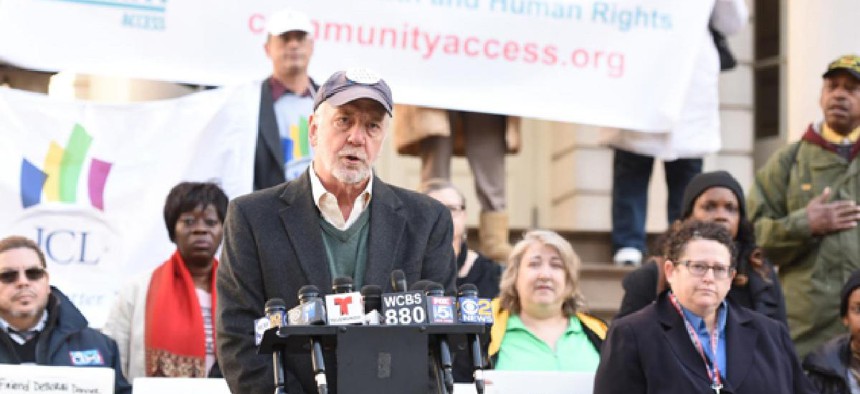Avoiding tragedy when police respond to people in crisis

Sean Sime Photography
In October 1984, New York City police officers were sent to the apartment of Eleanor Bumpurs, a 66-year-old African-American woman who had lived in a Bronx New York City Housing Authority unit for over 40 years. She was four months behind in her $98-per-month rent and was facing eviction. After a brief confrontation, Bumpurs was shot twice with a shotgun and killed.
On October 18, 2016, New York City police officers responded to a 911 call concerning Deborah Danner, a 66-year-old African-American woman in the Bronx, who neighbors reported was acting erratically. Within minutes of arriving at her apartment, an NYPD sergeant shot Danner twice after she swung at him with a baseball bat. Danner died.
Despite repeated calls for reform, New York City remains behind other communities in implementing a proven and effective model – Crisis Intervention Teams – that reduce the odds of a violent encounter with the police and can direct people in crisis to appropriate supports and services. For this reason, Communities for Crisis Intervention Teams was formed in 2012 to focus our advocacy during the run-up to the next mayoral election.
Our advocacy efforts, combined with several violent encounters between people in crisis and the police, led the de Blasio administration to form the Mayor’s Task Force on Behavioral Health and the Criminal Justice System, which was charged with developing a plan to incorporate best practices for CIT programming throughout the U.S. The plan was released in September 2014 and includes over 20 initiatives designed to improve outcomes for people with a mental health diagnosis who encounter law enforcement.
Key among the plan’s many elements is specialized training for the police and the opening of community drop-off centers where police officers can quickly transfer custody of a person who might have otherwise spent hours in a hospital with his or her NYPD escort. This approach is similar to a model developed in Memphis, which has been adopted by 3,000 law enforcement jurisdictions nationally.
Unfortunately, as witnessed by the recent fatal incidents – Deborah Danner in October and also James Owens, a 63-year-old with behavioral health issues who was shot to death in his Brooklyn apartment this month – trained officers are often not on the scene when needed. The officer training program was launched in June 2015 and about 5,000 of a targeted 5,500 officers have been trained. But with an active police force of 35,000 in a city of over 8 million people, that is simply not enough. We are advocating for the training of 10,000 additional officers.
Also, the promised crisis diversion centers are not in place. These centers are not considered an optional add-on in a well-functioning CIT model, but an integral element that supports CIT-trained officers. Unlike a hospital emergency room, which exists solely to manage cases within a medical environment, a diversion center taps into long-term treatment as well as social and clinical support options. For police officers interacting with a person in crisis, they also provide a venue for quick transfers of custody. For the person in crisis, they offer a critical point of contact and engagement.
Finally, improved data collection, metrics to measure success, and quarterly updates have not been delivered. And regularly scheduled planning meetings have not taken place.
We think it’s imperative for the de Blasio administration to produce an objective progress report that clearly identifies challenges and proposes solutions for achieving full implementation of the task force’s plan. In addition, all relevant stakeholders who helped design the plan should be involved in monitoring its progress.
The New York City Department of Investigation released a report on Jan. 19 critiquing the NYPD’s CIT program. It recommended improving the NYPD’s dispatch procedures for officers with CIT training and better reporting on incidents involving people in crisis. Unfortunately, the DOI report did not reference the task force’s plan, which quite correctly integrates CIT into a comprehensive system that requires coordination among multiple agencies. The NYPD is a valuable partner, but CIT and its many related initiatives need to be accountable to a deputy mayor.
As CEO of Community Access, Inc., Steve Coe has been dedicated to developing housing and service models that promote self-determination and social justice.
